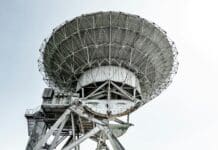This post is also available in:
 עברית (Hebrew)
עברית (Hebrew)
Recent research claims to have detected that Russia is advancing its military capabilities with the deployment of a new type of nuclear-powered cruise missile, the 9M730 Burevestnik, known as SSC-X-9 Skyfall to NATO. US researchers, using satellite images from Planet Labs taken on July 26, have identified a probable launch site for this missile, highlighting its strategic significance.
The 9M730 Burevestnik, unveiled by Russian President Vladimir Putin in 2018, was described as “invincible” and capable of overcoming any missile defense system. According to Putin, the missile’s nuclear-powered propulsion grants it an almost limitless range, fueling both intrigue and apprehension internationally.
The missile, named after the Storm Petrel sea bird, reportedly has a theoretical range of 20,000 kilometers. It is designed to carry a nuclear warhead and fly at low altitudes between 50-100 meters, making it challenging for air defense systems to intercept.
Despite these claims, Western experts have expressed skepticism. They argue that the missile’s operational status is uncertain, pointing to inadequate testing and issues such as radiation scattering. Additionally, a 2019 test of the missile reportedly ended in an explosion that killed at least five Russian nuclear experts, casting further doubt on its safety and effectiveness.
According to Reuters, the latest research indicates that Russia is positioning the Burevestnik missile at a nuclear warhead storage facility near Vologda-20, also known as Chebsara, approximately 475 kilometers north of Moscow. Satellite images show the construction of nine launch pads, grouped into threes on high berms, along with nearby buildings, likely for storing missile components.
So far, Moscow has not officially commented on the missile’s deployment. The timing of this revelation coincides with heightened tensions due to the ongoing war in Ukraine and recent changes in nuclear posture. Russia has threatened escalations in response to the US deploying nuclear weapons in Germany, further complicating the geopolitical landscape.
As the West grapples with these developments, the potential for the Burevestnik to strike any NATO country with its extended range poses a significant concern. The missile’s deployment underscores the need for vigilance and strategic preparedness in the face of evolving military technologies.


























